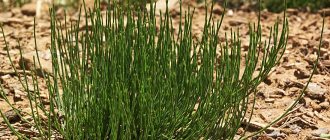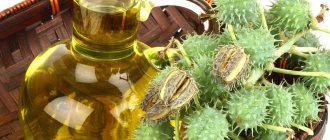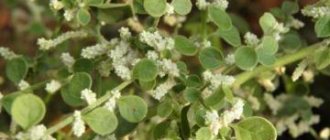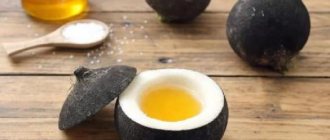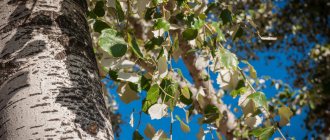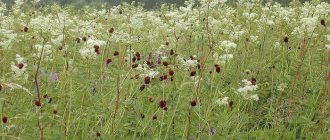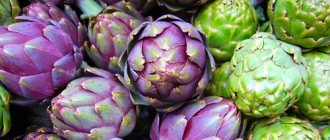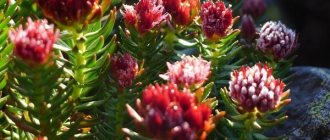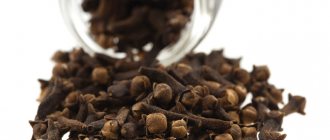Tar
It was thanks to birch bark that once upon a time our ancestors invented tar. This is a substance with a characteristic unpleasant odor, but a lot of useful properties. First of all, birch tar is an excellent antiseptic and anti-inflammatory agent.
Tar is obtained by distilling the top layer of birch bark. The distillation is dry, and mainly live trees are used, which are more than 10 years old.
Birch tar itself is a product of the decomposition of betulin. A very complex substance that makes the bark of birch trees white. In folk medicine, tar is used to treat various skin diseases such as ringworm or eczema. Birch tar helps with scabies and fungal diseases.
Birch tar - secrets of effective use
- 3.1 How to apply tar externally for skin and hair diseases?
What is birch tar?
Birch tar is a product of wood pyrolysis. Produced in tar mines.
It is a thick liquid, black in color with a blue or green tint, with a consistency reminiscent of machine oil.
It has a specific smell. Known as “Russian butter”.
How is birch tar obtained?
The production raw material for this product is the outer part of birch bark, separated from the inner bast layer.
The technological process for producing tar is reduced to slowly heating the bark to a temperature of 200-300°C without access to oxygen.
Raw materials decompose releasing tar, gas components and water.
The quality of the final product is determined by the quality of birch bark, the type of technological installation, and operating mode.
Raw materials can be classified as follows:
- pure sap birch bark;
- bark obtained from dead wood, dead wood (the admixture of bast is up to 30%);
- sanding birch bark (bast admixture up to 75%).
Depending on the raw materials used, tar is divided into:
- tar of the first grade;
- tar II grade;
- tar of lower grades.
Chemical composition of birch tar
Birch tar contains a number of aromatic substances, such as:
- toluene;
- xylene;
- phenol;
- betulin;
- tereben;
- guaiacol;
- xylenol;
- betuloside;
- wintergreen
It may also contain up to 15% tannins.
Essential oils and alkaloids, leukoanthocyanins and a number of catechins, characterized by vascular strengthening properties, have been isolated from the bark.
Birch tar contains carcinogenic substances, but in small quantities.
Treatment of bronchitis, flu and pneumonia with tar
But tar is used in the treatment of not only external, but also internal diseases. Most often, pulmonary. For this purpose, tar water is prepared for oral administration.
Birch tar is stirred in clean boiled water. 1 part tar to 8 parts water and leave for two days.
You will need to remove the resulting film and pour the water into another container. Keep refrigerated. In the treatment of bronchitis or pneumonia, use one spoon of water orally, before bedtime. Along with wrapping a warm scarf around your neck.
For flu and runny nose, tar, diluted with vegetable oil 1:5, is instilled into the nose, and lubricated with it on the chest for bronchitis.
How is tar useful?
The benefit of birch tar lies in its unique composition, which ideally combines a variety of beneficial substances and microelements that can tone the body and support the functions of its vital systems.
When taking tar internally, the following happens:
- metabolism is normalized;
- muscle tissue is strengthened and its elasticity increases;
- waste comes out;
- the processes of food absorption and digestion in general are normalized;
- healing of various internal injuries occurs, including cracks and tears;
- immunity is strengthened;
- cells are saturated with minerals and vitamins;
- excess fluid is removed, thereby reducing swelling;
- sand and stones come out of the gall and bladder;
- the bile ducts and urinary tract are cleansed.
The positive effect of this remedy becomes noticeable after just a few doses. For example, patients suffering from hyperhidrosis (excessive sweating) or sleep disorders note that after just a week of taking an aqueous solution of tar (tar water), the skin remains dry for a long time, and sleep becomes calm and deep.
What diseases does birch tar help with?
Instructions for using birch tar internally prescribe the use of a natural remedy for the prevention and treatment of a large number of pathologies, including:
- infectious and inflammatory processes in the kidneys, biliary tract and urinary system;
- vascular pathologies, including atherosclerosis;
- respiratory diseases (both acute and chronic);
- inflammatory and other pathological processes in the mouth and throat;
- disruptions in the functioning of the heart muscle;
- prostatitis (inflammation of the prostate);
- mastopathy;
- haemorrhoids;
- tuberculosis;
- excess weight (obesity);
- peptic ulcer and gastritis of various etiologies;
- liver dysfunction;
- disorders of the digestive system associated with impaired absorption of food;
- the presence of intestinal and other parasites;
- intoxication of the body;
- weakening of the immune system.
The wide range of applications is due to the fact that tar contains antifungal, antimicrobial, antiseptic, anti-inflammatory, antitoxic, healing and many other components. This natural remedy has a comprehensive healing effect, normalizing the condition of the body as a whole.
What diseases will birch tar help with?
Like any medicinal product, birch tar cannot be taken haphazardly, in any order. You need to use this powerful natural product correctly. The regimen for taking birch tar directly depends on what pathologies or chronic diseases need treatment.
Mastopathy, papillomas - folk experience
And now I want to give advice to women, and not only. For mastopathy, drink 1 to 3 drops of birch tar orally at night. It is nasty and smelly when taken orally, but very effective. At the same time, it treats polyps in the stomach and intestines.
When the intestines are cleansed, papillomas will disappear. If you want to speed up the process, lubricate the papillomas with the same tar. And so as not to be too disgusting, make a pea out of black bread. Drip tar onto it, place it on the root of your tongue and be sure to wash it down with milk - a maximum of 0.5 cups.
There will be no smell and no burping. And not earlier than 3 hours after eating.
Tar production technology
There is no point in giving a detailed description of the technology of the tar production process, and, in short, the technology is based on the dry distillation of birch bark.
Under the influence of high temperature and in the absence of oxygen, wood is destroyed, as a result of which complex chemical compounds break down into simpler components (phenols, cresols, aromatic compounds, etc.) and are released in the form of a resinous viscous liquid.
For medical needs, tar is subjected to fractional distillation to separate low- and high-boiling fractions. The low-boiling fraction is “medicinal tar,” and the resin fraction is industrial cheese.
The technology for “producing medicinal tar,” used in ancient times, involved a “wet” distillation method, when a certain volume of water was added to a distillation cube filled with birch bark. Superheated water vapor served as a kind of “thermostat”, preventing an excessive increase in the temperature of the process, and, accordingly, increasing the yield of the low-boiling fraction.
Fibrous mastopathy, cyst on the kidney are treated with tar
I am a doctor myself, I am writing because I want to answer questions about mastopathy.
When my aunt fell ill with mastopathy, she was in despair, not knowing how to treat herself. An elderly nurse helped. She brought a recipe that she got from her grandmother. For the first 3 days you need to drink 3 drops of birch tar orally (available at the pharmacy). Dilute in 0.5 cups of almost hot milk, 3 times a day before meals.
For the next 3 days, drink 5 drops per 0.5 glass of milk 3 times a day. The next 4 days - 7 drops of tar in milk with the same frequency. Break for 10 days, after which start drinking the composition again, but in the reverse order. After this, a break for 1 month. Then repeat the course. In general, treatment takes 60 days.
Thus, my aunt cured her fibrous mastopathy. By the way, the cyst on the kidney also resolved at the same time. And one more thing: if you have dandruff, use tar-based shampoo. However, if you are a blonde, this advice will not work, as tar turns blondes into brown-haired people. It is better to rub table salt into the scalp for 10 minutes.
Pharmacological preparations based on tar
- Vishnevsky's liniment . It is used to accelerate the maturation of boils, in the treatment of wounds and other traumatic skin injuries. The ointment contains tar and xeroform (3 parts each) per 100 parts castor oil. The well-known “army remedy for all diseases” (a rather strange method of application is to lubricate inflamed tonsils with a sore throat).
- Ointment against scabies. It is prepared on the basis of naphthalan ointment (40 parts), medical soap, birch tar and sulfur (ratio 30:15:15).
- Wilkinson's ointment. Modification of sulfur-tar-naphthalan ointment by adding 10 parts of calcium carbonate and 4 parts of water to the composition. It is used to destroy scabies and in the treatment of fungal skin infections.
Treatment of tuberculosis
For tuberculosis, tar is taken orally with milk. Start with one drop per 50 g of warm milk - once a day in the morning on an empty stomach for a week. 2nd week - two drops, and so on, including the 10th week.
Then a two-week break, and the course of treatment is repeated for up to six months. This treatment is also carried out for furunculosis and carbuncles. For parasitic lesions and all kinds of infections in the body. When used with caution, no adverse effects are observed. — If you are sure that the tar is real, natural birch.
Pharmacological properties of tar
The pharmacological effect of birch tar and drugs is due to the medicinal properties of the substances included in its composition. Phenols and cresols themselves are extremely aggressive substances, both chemically and in their mode of action on living organisms.
As is known, phenols are used for sanitary treatment and disinfection of premises and technical equipment. In their pure form, tar ingredients have an intense irritant effect and, when applied to the skin, cause a chemical burn. In therapeutic doses, tar preparations stimulate the functioning of various organs and systems of the body through reflex irritation of skin receptors and nerve endings.
Similarly, when considering the aspects of “tar therapy” for internal use, the complex action of all components that make up the tar is implied. When using tar externally, the main emphasis is on its antimicrobial and antibacterial properties.
External use of tar
External use of tar is justified in the treatment of various skin diseases:
- — diseases of an infectious nature (fungal infection, dermatitis, lichen, etc.);
- — parasitic infestations (itching, tick-borne dermatitis, etc.);
- - systemic diseases, that is, those associated with diseases of the internal organs (psoriasis, rashes, eczema, furunculosis);
- — physiological problems (inflammation, dry callus, postpartum mastitis, etc.);
- - injuries (burns, wounds).
Internal use of tar
- - genitourinary infections (urethritis, cystitis);
- — metabolic disorders (urolithiasis, gout, etc.);
- — oral infections (stomatitis, gingivitis);
- - inflammatory processes (gastrointestinal diseases);
- — infectious colds (otitis media, sore throat, etc.);
- — disease of the upper respiratory tract of an infectious-viral nature, invasion (asthma, tuberculosis, etc.);
- — oncology.
Opisthorchiasis of the liver
I also want to give a folk recipe on how to remove opisthorchia from the liver with tar. You need to drink medicinal tar with a small amount of milk internally according to the scheme. Add one drop every day. And so, starting with one, add up to 25 drops and back, subtracting one at a time.
This procedure, however, is not very pleasant, but success is guaranteed. I admit that in the opposite direction I finished up to 15 drops and didn’t drink any more. And for 20 years now there has been no trace of opisthorchiasis or lamblia.
And here is another message about the treatment of opisthorchiasis with tar.
I fell ill with opisthorchiasis at the age of 30. I took different medications, but nothing helped. One day, a doctor advised me to drink pharmaceutical tar.
The recipe is as follows: add 1 drop of tar to a tablespoon of warm milk. Take orally in the morning on an empty stomach 20-30 minutes before meals. Add one drop every day and bring the dose to 20 drops. Then start reducing their number, returning to the original figure.
Then take a break for 10 days and repeat the treatment. The full course of treatment should be 40 days. Now I am 75 years old, and I have forgotten about that insidious disease.
Traditional medicine recipes
Birch tar is used in folk medicine for the treatment and prevention of many diseases. It is correct to drink it in diluted form. Tar tar has a rather unpleasant taste, so it is dissolved in milk or freshly squeezed juice. When other components are added, the water tincture does not lose its healing properties.
Attention! Most of the recipes listed below are not recognized as evidence-based medicine. Do not use them as a substitute for treatment prescribed by your doctor. Consultation with your doctor is required to avoid side effects.
Traditional recipes for oral use
These recipes with tar are recommended by folk healers as an aid in the treatment of diabetes, mastopathy, breast cancer, gastrointestinal tract, hepatitis, kidneys, getting rid of worms and parasites, including opisthorchiasis.
- With milk. Before meals, take 0.5 tbsp. warm milk with the addition of birch tar. They start with one drop of tar. Every day the number of drops is increased by one. They continue to do this for 10 days. Next, you should take a break from taking the drug.
- With bread . Place 5 drops of tar on a piece of bread, quickly chew and absorb. The next day, drop 6 drops, and so increase by 1 drop daily and reach 10.
- With sugar. Place a drop of tar on a piece of sugar. Dissolve until dissolved. Increase the number of drops every day.
Depending on the type of problem, traditional healers recommend various other tar treatment regimens.
- A sore throat. For acute respiratory infections affecting the upper respiratory tract, gargling with tar water will help. Rinse 30 minutes before meals three times a day.
- Sinusitis. Place two drops of tar water into each nostril daily. You can also carry out inhalation - pour a little tar onto a heated surface and inhale the vapors. You can add tea tree oil.
- ARI and ARVI . Inhalations will help overcome viral and bacterial diseases. Add 20 drops of tar to 1 liter of water. Breathe for 10 minutes daily until complete healing. Against influenza viruses, it is recommended to consume 1-2 tbsp of tar water daily. spoons morning and evening. It can also be used as part of complex therapy for tuberculosis, pneumonia, and bronchitis.
- Gynecology. If you are worried about candidiasis (thrush), or a cyst has formed, you can use tampons with birch tar. To treat uterine fibroids, you need to mix 1 tbsp. spoon of honey, butter and tar, mix, soak a tampon with the mixture, insert into the vagina overnight. The course of treatment is a month.
- Haemorrhoids. If you are worried about hemorrhoids, rectal suppositories made of tar will help. Adults – 1 candle in the morning and evening. Course – 10-15 days. Then a break of 1 month.
- Psoriasis. Apply tar to the affected areas of the skin, take a bath, and spread salicylic ointment on top of the tar. Repeat every day.
- For joint pain. If your joints hurt, you can make compresses from tar and clay. These products should be used every other day. Keep the compress for one hour. Treatment 10 days.
- Skin diseases . Traditional healers recommend treating wounds, warts, heel spurs, papillomas, lichen, vitiligo and demodicosis using tar soap. To do this, you need to make a soap solution, soak a piece of bandage in it, and apply it to the sore spot before going to bed. The course of treatment is 3-4 weeks.
- When losing weight. To lose weight and cleanse the body, it is recommended to drink tar water (2 tablespoons) every morning. The course is two weeks.
- Prostatitis. According to Neumyvakin’s recommendations, prostatitis can be cured with tar and hydrogen peroxide. Take 1 drop of tar, add 1 tbsp. a spoonful of hydrogen peroxide. Consume before meals.
Driven out parasites with trichopolum and birch tar
Giardia and flukes
In 1975, I went to a sanatorium for gastrointestinal diseases. After probing the liver, Giardia and flukes were found. I became infected with them because of my addiction to raw frozen fish.
The doctor prescribed me treatment for Giardia - drink local mineral water and trichopolum. Take 3 tablets for a week, then break for 7 days. Course - 21 days.
And this is what happens to flukes. When you arrive home, buy birch tar at the pharmacy. And drink orally in drops on a piece of sugar, always washed down with milk. The scheme is as follows: 1 day - 1 drop in the morning, 2 at lunch. Three at dinner and so on, adding a drop every day. Bring to 25 drops, and then in the opposite direction.
After this course of tar, drink the garlic tincture prepared in advance:
- Chop 400 g of garlic and pour in 200 g of medical alcohol;
- leave for 2 weeks;
- strain and take, starting with 1 drop;
- increase to 10 and return to one, also drink milk.
Returning home, I followed the recommendations and within 4 months I got rid of the scourge. But I also stopped eating raw fish.
How to prepare tar yourself and where to buy it
Since birch tar is gaining increasing popularity in various fields, from gardening and gardening to medicine and cosmetology, you can buy it at several points at once - in a regular pharmacy, in specialized garden stores, in online stores.
If you need large volumes of this product, and you are not afraid to work with your hands, you can prepare birch tar yourself.
There are two types of tar - birch and birch bark. The first is obtained by dry distillation (pyrolysis) of birch chips, twigs and bark, the second is obtained only from birch bark of young birch bark. The main difference lies in the concentration of aromatic substances in the resulting substance. If birch bark tar has a fairly light odor and is used mainly for the production of medical and cosmetic preparations, then birch tar, with a pungent spirit, is a dark oily liquid and is perfect for gardeners. It is both excellent protection against various fungal diseases, an excellent antimicrobial agent, and an excellent antiseptic. This absolutely natural remedy perfectly protects against many pests of cultivated plants.
We offer you a recipe for obtaining birch tar:
- Make a hole in the bottom of a large iron container, fill the container tightly with young dry birch bark and small wood chips, and seal the lid as tightly as possible.
- Place a smaller container in a hole dug in the ground - this is where the resulting tar will collect.
- Place a large one directly above the small container - with the hole down (the tar will drain from there).
- Cover the top container with firewood and set it on fire.
- After 4-5 hours you can evaluate the first results - tar should already have collected in the lower container.
From 10 kg of birch bark you can distill approximately 3 kg of tar.
Pharmacy and store-bought tar will already be purified and, therefore, more effective than homemade. This does not apply to cosmetic preparations based on tar - for example, tar soap - there is so little tar that they will be almost useless as a repellent in the garden.
I'll smear the edge of the bread with tar for spurs
Treatment with tar for hemorrhoids and spurs on the legs:
I'll tell you how I got rid of spurs. The recipe was given by my niece. You need to take 2 crusts of black bread, spread it with tar, and bandage it to the soles. Wrap your feet in cellophane and something warm and go to bed.
True, this method has one “but”: all the joints and all the sores will ache. I toiled from 11 pm to 4 am. The procedure must be repeated 3 times. During treatment, do not stand up or cool down under any circumstances. I haven’t remembered the spurs for 18 years now, and the hemorrhoids disappeared for about six years.
Benefits for the human body
Birch tar is used in official medicine only externally. Traditional medicine recipes also recommend taking it internally.
Healing properties of birch tar when used externally:
- eliminates itching and irritation;
- reduces inflammation;
- has an analgesic and disinfectant effect;
- heals wounds and burns;
- stops the development of purulent processes;
- helps get rid of boils and fungi, kills germs.
Examples of the beneficial effects of tar when used internally:
- activates the immune system;
- accelerates metabolic processes;
- normalizes cholesterol levels in the blood and improves vascular permeability;
- promotes the removal of parasites from the body;
- improves the digestive process, promotes weight loss.
Ointment for psoriasis
An ointment made from tar and lard in a 1:1 ratio has long been used. There is also a folk recipe against psoriasis. How effective it is is up to you. In addition, there are many other traditional medicine recipes.
An ointment is prepared for this. From birch tar, butter and copper sulfate in a ratio of 1, 1 and 0.5 parts. All this is thoroughly mixed and then boiled over low heat for five minutes. You can also use fish oil instead of butter.
Store this ointment in a cool, dark place. And use externally no more than once a day. It is important to take medications to cleanse the intestines. In this case, we can talk about successful treatment.
On sale you can find tar soap, which consists of 40% birch tar. It helps in the treatment of head lice. Tar works well against various fungal diseases, including foot fungus.
Feet must be absolutely clean before tar is applied to them. Wear it for three days without washing it off. Usually, 3-4 such three-day procedures lead to the complete disappearance of the fungus.
Birch tar - Healing properties
The benefits of birch tar have long been known.
Due to the large amount of phenolic substances, birch tar exhibits antiseptic and antimicrobial properties.
This promotes rapid healing of wounds, cuts, and suppuration.
This product is the main component of Vishnevsky ointment.
- Tar is used for skin diseases, rashes, lichen, scabies, eczema, seborrhea, psoriasis, neurodermatitis. The product also copes well with allergic ailments. So, tar relieves itching during diathesis.
- For fungal diseases, preparations containing birch tar are used. It’s no wonder that tar soap and shampoo are very popular these days.
- It is also used for diseases of the respiratory system. Indications for use include bronchitis, cough, asthma, tuberculosis, colds and even oncology.
- For mastopathy, hemorrhoids and joint diseases, traditional medicine also uses tar for treatment.
- Tar has long been used to treat wounds and burns. This helps prevent rotting processes and tissue necrosis. The regeneration of injured areas is accelerated, blood circulation and tissue nutrition are improved, and the skin is rejuvenated.
- Like pumpkin seeds, the product is used as an antiparasitic agent. With its help, it is possible to cleanse the body of many types of worms.
- Tar is included in the formulations of many medicinal and cosmetic preparations.
How I got rid of herpes, and my son got rid of dry eczema
I’ll tell you how I got rid of herpes many years ago. I woke up one morning and felt severe itching and burning on my buttock. Diagnosis: herpes.
I took tests, took quartz, used ointments, 4 months of treatment - and no result. Tired and exhausted, she decided to treat herself. And then I remembered how some time ago my mother cured her dog who was suffering from lichen. I smeared her back with creolin. I decided to try this method on myself.
She took a bandage, folded it eight times, soaked it in creolin, squeezed it out, and applied it to the herpes. And covered it crosswise with a wide adhesive plaster. Creolin has a very unpleasant smell, so I applied a bandage at night.
The next day I got up, feeling a little itching, and in the evening the itching and burning disappeared! I didn’t change the bandage for 3 days, then I repeated it again - and... More than 10 years have passed since then. I don't remember herpes. I could barely find creolin then, but now pharmacies sell birch tar, so it’s even better than creolin.
Using this folk recipe, I treated dry eczema on my son’s hands and feet. I mixed 1 part chicken egg white and 2 parts birch tar. Beat it well and apply it to the affected areas with a brush. I kept them open until the mixture was absorbed. At night I bandaged the sore spots so as not to stain the bed.
The most difficult thing in this treatment is to endure the unpleasant, heavy smell of birch tar. For the effect to come faster, it is advisable to lubricate the affected areas after taking a shower or bath. Apply until skin is clear. It will sting.
Birch tar: application in veterinary medicine
In veterinary medicine, tar-based shampoos, emulsions and oils are mainly used. These remedies quickly eliminate itching and help get rid of lichen, seborrhea, mites, lice, nits, fleas and other parasitic insects.
Birch tar has an unpleasant odor only during use, but on animal fur it reveals the aroma of wood and bark. To avoid harm to your pet, strictly follow the instructions and follow the veterinarian's recommendations.
Tar + fat – for eczema
I have recipes for almost any illness. “My mother copied them from my grandmother, a healer, who spent her entire life treating people with herbs. All her recipes have been tested by both my mother and me.
For example, we learned from her that sore eyes are washed with the juice of fresh meadow clover. They make lotions from blue cornflower infusion. (A teaspoon of crushed flowers per 250 ml of boiling water, leave, strain). Or drop 1 drop of white juice from the broken stem of a spring dandelion into the eyes.
I knew this grandmother, a healer. She also cured me of eczema with her ointment. I was 14 years old then. I have seen a recipe for this ointment (tar + badger fat), but it was written down in my grandmother’s notebook. That the tar is first boiled for 1.5-2 hours. And then about the same amount of badger or bear fat is added. But you can also use interior lard. The result is a dark, thick ointment.
How and against which garden pests tar is used
As a substance that acts primarily due to its pungent odor, tar in the garden is more effective against those pests that have a keen sense of smell, as well as underground inhabitants (where the smell does not erode and disappear longer) - mole crickets, small mice, moles . Treatment against them, in connection with the situation described above, is usually sufficient to carry out once a season; the repellent effect of tar in the soil lasts more than a month.
As a repellent, tar in the garden can also be successfully used against flying insects (Colorado beetle, butterflies, moths, flies, sawflies, etc.) and ground rodents - however, it has a weaker effect on them and takes less time, about 20 -30 days, so treatments will have to be repeated.
Tar has the weakest effect (several days) on ants and most adult beetles (bronze beetles, click beetles, weevils). Fighting these pests with tar alone will not be entirely successful; you will have to combine it with other drugs.
Tar in mixtures is incompatible with almost all synthetic pesticides and biological products - it is even recommended to store them in different rooms. But the product combines well with minerals and natural extracts. Their combined use even enhances their mutual effect.
So, what pests and diseases does tar help against in the garden? Here are 21 ways to use this popular product.
Birch tar from the Colorado potato beetle
Potatoes, eggplants, tomatoes and peppers will thank you if you spray them with a tar solution against the Colorado potato beetle.
The solution is prepared as follows: 10 ml (2 tsp) of tar and 50 g of laundry soap are dissolved in 10 liters of warm water. You can spray the plants with it (before the start of flowering, during the appearance of buds and during the period of intense flowering) or generously moisten the bushes, as well as the soil between the rows until a wet film forms on the leaves.
Birch tar from the mole cricket
Tar will help save your plants from mole crickets in several ways.
The first is the treatment of seed and planting materials - for example, lubricating the tubers with an undiluted preparation. The second method is to spray the already risen plants with the above-described tar-soap solution (soap here acts as an adhesive).
Birch tar from moles (hamsters, marmots)
Moles, hamsters, marmots and other burrowing mammals can also be expelled from the site in different ways. For example, by plugging all discovered entrances to their burrows with pieces of cloth, richly soaked in undiluted tar, and covering them with earth. For such impregnation, you can also use a tar-oil mixture (3 parts tar to 1 part vegetable oil). It is better to start all these activities in early spring; in the summer it may be too late.
Another way is to drive small (about 20x4 cm) wooden pegs throughout the area at a distance of 3-4 m from each other, generously greased with tar at the bottom. If necessary, they can be dug up from time to time and the “fragrant” treatment renewed.
Birch tar from hares (mice, voles)
To protect trees and shrubs from rodents such as mice and hares, autumn mulching of the tree trunks of plants with sawdust soaked in tar solution (1 tablespoon of tar per 10 liters of water), and autumn whitewashing of the bottom of trunks and lower branches with a special solution (10 liters of fresh manure, 1 kg of ready-made whitewash and 3 tablespoons of tar, dilute with water to the consistency of thick kefir).
Birch tar from onion fly
To get rid of the attention of the onion fly, it is recommended to soak the planting material of onions and garlic literally half an hour before sowing in a tar solution (1 tsp of tar per 1 liter of water).
After germination of the seedlings, it is also worth watering the rows of these plants with a solution prepared from 10 liters of water, 30 g of soap and 1 tbsp. tar, repeating the procedure again after 10-15 days.
Mulching the beds with sawdust soaked in a tar solution also helps (see preparation diagram above).
Birch tar from cabbage fly
To combat cabbage fly on cruciferous crops (radish, cabbage, turnips, horseradish, etc.), a tar solution is used (1 tablespoon of tar per 10 liters of water), which is poured onto beds mulched with sawdust. The procedure is carried out in early spring and the mulch layer is renewed in early August.
Birch tar from sea buckthorn fly
A fly that damages sea buckthorn plantings can also be repelled by the smell of birch tar. To do this, small containers with it are hung inside the bush or pegs wrapped in rags soaked in tar are driven in nearby.
Birch tar from carrot fly and psyllid
Tar also helps carrots - to escape from carrot flies and psyllids, which also do not like its smell.
You already know the recipe - 10 liters of warm water + 1 tbsp. birch tar. Carrot beds are watered with this solution on pre-moistened soil twice a season (in July and August). If the insect infestation is large, you can water the beds a couple more times, and also spray them - then 20-30 g of soap shavings should be added to the above solution as an adhesive.
Birch tar from sprout fly
Treatment with the solution described above also helps against germ flies on all pumpkin crops (cucumbers, zucchini, pumpkin, squash). Vegetable seedlings are sprayed with a solution against this pest.
Birch tar from sawfly
There are several types of sawfly (gooseberry, cherry, etc.) that damage a wide variety of plants: white and red currants, gooseberries, cherries, pears, plums, apple trees. However, all these pests cannot tolerate the smell of tar, so they can be successfully controlled using this product.
The bushes are sprayed 3-4 times per season with the following mixture: dissolve 100 g of grated laundry soap, half a glass of ash and 2 tbsp in 1 liter of boiling water. tar, dilute the mixture with 5 liters of warm water.
The trees will also have to be sprayed several times a season (at the beginning of the leaves blooming, and then, if necessary, at weekly intervals) with a solution already familiar to you: 10 liters of water, 1 tbsp. birch tar, 30 g of soap.
Birch tar from wireworm
Potatoes, carrots, beets, radishes and other root vegetables need to be protected from wireworms, including this can be done with the help of tar.
In advance, you can etch the seed for 40-50 minutes in a tar solution (1 tablespoon of tar per 10 liters of water) and moisten the wells with the same solution before planting. Plants grown from seeds are simply watered with this solution several times a season at intervals of 2-3 weeks.
Birch tar from aphids
Copious spraying of plants with a tar solution a couple of times a season at intervals of about a month helps against aphids.
The solution is prepared as follows: 50 g of tar soap is crushed, dissolved in 1 liter of boiling water and stirred. After complete dissolution, add 1 tsp. tar and another 20 liters of water.
Birch tar for ants
If we already mentioned aphids, let us immediately remember their almost constant companions - ants, against which tar also helps to fight.
Trees on which ants “graze” aphids are generously smeared with undiluted tar along the trunk or wrapped in rags soaked with it - constructing a kind of hunting belt. If the ants have settled right in your garden, you can pour a few milliliters of pharmaceutical tar on the top of the anthill - the insects definitely won’t like it, and they will most likely leave the inhospitable area.
Birch tar for spider mites
If you notice signs of spider mite activity on your plants, treat these places with a soap-tar solution that is already familiar to you (10 liters of warm water + 10 ml (2 tsp) tar + 50 g of laundry soap), paying special attention to the underside of the leaves .
Birch tar from cabbage whiteweed
The cabbage butterfly (cabbage white butterfly), familiar to all gardeners, can easily be scared away from plantings by its tarry smell. To do this, place pegs in the garden, wrapped at the ends with rags soaked in undiluted birch tar. Additionally, sawdust soaked in a water-tar solution can be laid out on the beds - this will also help against other insect pests.
Birch tar from gooseberry moth
The gooseberry moth, which harms gooseberry and currant thickets, actively damages the ovaries of these plants. To combat it, before flowering, berry bushes should be sprayed with a tar solution (1 tablespoon of tar and 20 g of soap shavings per 10 liters of water), and then simply hang containers with tar on the branches inside the bush.
Birch tar from codling moth
Garden plantings very often suffer from the “work” of the codling moth. Apple, cherry, plum - all its types are equally dangerous and can destroy up to half the crop. The caterpillars of this insect spend the winter period under the bark of a tree, and during the flowering period, having already turned into butterflies, they begin laying eggs in the lower part of the leaves. The moths that hatch from them feed on the fruits.
Therefore, while the butterflies have not yet flown out (at the beginning of flowering) and immediately after flowering, the trees and the soil under them can be sprayed with the already familiar odorous tar solution with water and soap. Small containers with tar solution (1 tsp of tar per 5 liters of water), suspended in the crown of trees shortly before they begin to bloom, will also be useful.
Birch tar from hawthorn
Hawthorn larvae work on crops of the Rosaceae family (apple, cherry, pear, plum, apricot, etc.) similar to the codling moth, actively eating buds, young leaves and buds, only the insect overwinters in nests located on the leaves, which are pre-wrapped with cobwebs . These nests need to be removed first. Then the soil under the tree and the plant itself are treated with a tar solution (traditionally, 1 tablespoon of tar and 30 g of planed soap are taken per 10 liters of water). The first treatment is carried out in the “green cone” phase, the second – shortly before flowering (April), and the subsequent ones immediately after flowering with an interval of two weeks (depending on the presence of caterpillars).
Birch tar from raspberry-strawberry weevil
Raspberry, blackberry and rose hip bushes are often damaged by the raspberry-strawberry weevil: dried ovaries are clear proof of this. Therefore, before the buds appear, the berry bushes should be generously sprayed with a water-tar solution with the addition of soap (see recipe above). After a week, the procedure can be repeated.
Birch tar from cherry weevil
The cherry weevil feeds not only on leaves, but also damages young shoots of stone fruit trees, buds, ovaries and inflorescences, and after the fruits ripen, it gets to them. To combat this pest, also dissolve the familiar mixture of tar and soap in a bucket of water and thoroughly moisten the trees from the sprayer with this fragrant solution. Carry out the procedure in early spring before the buds open, then repeat when the buds open and shortly before flowering.
Birch tar against scab and other bacterial and viral diseases
Tar can also save your plants from many bacterial and viral infections that can leave you completely without a harvest. To prevent their development, fruit trees and shrubs are generously treated with the above-described tar-water solution with the addition of soap (only more tar should be taken, 1.5-2 tbsp.) or lubricated with a mixture of undiluted tar and ash (2:1) the period of appearance of young leaves.
And they remembered about birch tar!
Treatment of foot fungus with tar:
I want to talk about the war against foot fungus. Most authors use vinegar in all forms as the basis for their recipes. No matter how hard I tried, the soles remained cracked.
Doctors unanimously declared that it was incurable. I went to the pharmacy and they offered me Lamisil. I used it. The cracks turned into ulcers, and the fungus “out of fright” scattered to the sides, capturing new territories. The wife was alarmed. They began to remember what it was like during the Great Patriotic War. And they remembered!
In old notes, the wife found a remedy - pharmaceutical birch tar. I started by thoroughly washing my feet. Then I steamed them in soapy and barely tolerable hot water for 20 minutes, periodically adding boiling water. He took out the crow's feet colored feet and used scissors to scrape off everything he could. I wiped my feet dry again and used a cotton swab wrapped around a match. I generously smeared birch tar on all places where the fungus might live.
He immediately lay down on the bed, spreading the newspaper under his heels. I lay there for 1.5 hours, scenting the entire apartment. He dried his feet again and put on cotton socks, which he did not take off for two days.
After that, I admired the result: my feet acquired a pleasant apricot color. And most importantly, the skin became skin, not a crust, although in some places there were still dead plaques. Soon they too peeled off, the sole seemed to “remember” its youth!
How to take tar against parasites when treating fungus and acne?
A fungus that affects the nail plates is often not completely cured by various ointments, and after some time the symptoms of the disease return again. Birch tar effectively copes with fungal infections; it is not for nothing that many medicines intended for the treatment of mycoses have been created on its basis. When using a natural product, it is recommended to simply wipe the affected areas of the nail and surrounding skin with it several times a day.
But fungal infections can be more than just nails. When pathogenic fungi multiply in the oral cavity or genitals, you can use tar water, which is prepared in a ratio of 1:10 and infused for two days. You should drink a couple of spoons per day before meals. Additionally, the infusion is used to treat the oral mucosa and gargle. If the genitourinary system is affected, douching with tar water is done. In this case, it is usually possible to cope with the fungal infection in 10-14 days.
The use of birch tar internally against parasites is done as follows:
Add a drop of the product to 50 ml of warm milk and drink 30-40 minutes before meals. The next day you need to add a couple of drops and thus gradually increase the total volume of tar taken to 15-20 drops. After this, you should take a day break and start taking the natural product in the reverse order, that is, daily reducing the amount of tar by 1 drop. Using this method, you can not only cope with different types of parasites in the intestines, but also cure giardiasis of the liver.
Another way to use a deworming remedy is to take it with honey. In a spoon of light flower honey, you need to dissolve 1 drop of birch tar on the first day, and adding a drop every day, take the product for 12-15 days. The intestines are guaranteed to be cleared of parasites, while the functioning of internal organs and overall health will improve.
Another common problem is skin conditions. Pimples, blackheads, and various rashes are a reflection of internal pathologies. Taking tar helps to cope with this problem due to the fact that metabolism is normalized, and the body is gradually cleansed of harmful and ballast compounds. To eliminate skin problems, you need to drink a water infusion of tar, prepared in a ratio of 1:8. It should be taken after this remedy has been infused for two days in a dark place. You need to drink tar water for acne twice a day, half a glass, on an empty stomach. The course of treatment is at least 10 days.
Article on the topic: Goals and methods of studying the Babinski reflex in neurology
Popular recipes
Like any folk remedy, birch tar is used in a variety of ways. There are many simple and accessible recipes for its use, the effectiveness of which has been proven for centuries. Let's take a closer look at the most popular of them:
Birch tar and rye bread
The use of these ingredients clearly confirms that everything ingenious is simple. You need to drop a drop of tar on a small piece of rye or malt bread and eat it. Every day you should increase the dose of the remedy so that the body gets used to it gradually and add it drop by drop, bringing the total volume to 10-12 drops by the end of the course. After this, take a week break and repeat the course again. This simple recipe helps to completely normalize the functioning of the stomach and intestines.
Tar and sea buckthorn
Another popular way to use tar is to combine it with sea buckthorn jam. The scheme is the same as in the first case, only instead of bread they take a large spoon of jam, to which tar is added dropwise from 1 to 8-10 drops. Then take a break for a week and, if necessary, repeat the course of treatment. This method is very good for normalizing the functioning of the kidneys and heart.
Skin diseases
Several folk recipes for making tar ointments. For the treatment of psoriasis, eczema. Contact dermatitis and other skin diseases caused by infections. For ease of preparation, “aftershave cream” is used as the basis for ointments:
- For 1 tube of cream take 1 teaspoon of tar;
- the mass is heated to 60°C;
- and pours into a jar.
Apply ointment twice a day:
- The affected skin areas are washed with a hot solution of baking soda. Or a thick mustard solution (50°C);
- do not get wet, allow to dry and apply a layer of cream without rubbing into the skin.
Of course, we must act very carefully. Consider individual sensitivity and start with small doses.
Hands and soles of feet affected by fungal diseases:
- need to be kept in a hot bath with soda or mustard solution (50°) for 10 minutes;
- let it dry and then apply ointment.
For psoriasis, along with ingesting tar in milk in increasing drops. First treat the affected areas of the skin with a water infusion of horseradish. (1 part grated horseradish and 1 part water). Then apply ointment.
Respiratory diseases
For diseases of the respiratory system, the natural product is recommended to be used as follows:
The tar should be diluted with clean water in a proportional ratio of 1:8 and the resulting solution should be kept for a couple of days. The container in which the aqueous solution of tar is infused should be made of dark glass and should be protected from direct sunlight and dust. After the allotted time, the infusion is ready for use and you can begin treatment. Depending on your general condition and well-being, you should take from one to three tablespoons of infusion before bed. After taking tar, you need to stay in bed, warm and calm.
Tuberculosis and blood poisoning (sepsis)
Tar can help even with such severe conditions. Traditional healers recommend diluting natural birch tar in milk in case of blood poisoning, severe intoxication of the body or tuberculosis, at the rate of 2 drops of the product per half glass of warm milk. The composition is stirred and immediately drunk. This should be done twice a day for a week. After which you should stop for 5-7 days, check the condition of the body and, if necessary, repeat the course. Of course, taking tar cannot replace drug treatment; this remedy can be used as a supplement to the main course of treatment and only in consultation with a doctor.
Liver and kidney diseases
If the functions of vital organs such as the liver and kidneys are impaired, tar is taken along with honey and sour cream. The treatment regimen involves a gradual increase in the volume of the medication so that the healing substances gradually accumulate in the body and at the final stage have the maximum therapeutic effect. The treatment regimen is as follows:
A teaspoon of light flower honey should be mixed with a teaspoon of sour cream and a drop of tar. On the second day, two drops of the remedy will be required, and so on. That is, every subsequent day you need to add 1 drop of tar more. At the same time, the volume of honey and sour cream should remain unchanged. Depending on the severity of the symptoms, the number of drops should be gradually increased to 10-12, carefully monitoring the patient’s condition. If your health worsens, you should not increase the volume of tar. You need to take the mixture once a day. After completing the course, you need to take a week's break and check the condition of the body, and repeat if necessary.
Article on the topic: Well-functioning mechanism of the autonomic nervous system
To enhance therapy, it is good to drink oatmeal decoction or infusion during treatment, which helps cleanse the liver and kidneys of toxins. It’s very simple to make – pour boiling water over oats or cereal in a proportion of 250 ml per 1 tablespoon of product. The oat product should be infused for at least three hours, and when preparing a decoction, simmer over low heat for no more than 10 minutes. Use as usual, without any restrictions.
Healing recipe
Something bad happened to me: I had a sore throat and a rash appeared on my body. I went to a dermatologist, who simply stunned me: Psoriasis plus diabetes. I was in shock, I don’t remember how I got home.
The body was covered with scabs, like a shell. In folk medicine books I found a recipe using birch tar. I bought 4 bottles at the pharmacy. My husband oiled me from head to toe, and I walked around naked for 40-50 minutes. It's good that it was summer.
Then I went to the bathhouse and washed myself with celandine infusion. I brewed the celandine by eye. She dried herself without wiping herself. And so - every day for two weeks. At the same time I drank Hilak tincture. After two weeks everything went away, and to this day my body is clean. I also fight diabetes mellitus using the advice of traditional medicine, I follow my diet.
Disadvantages of using tar in the garden
There will be no real harm from birch tar as such on the site - it is not poisonous to people (there are many drugs based on it in medicine and cosmetology), it repels most pests and does not kill them, and does not accumulate in large quantities in plants. However, there are also some inconveniences and disadvantages when using it in gardening and horticulture. Let's list some:
- A strong, unpleasant smell for many that can scare away even neighbors and relatives from the site.
- It works equally on both harmful and beneficial insects - you risk being left without helpers in the garden.
- Tar cannot be used on fruits and edible green mass, because their taste and smell deteriorate.
- For the same reason, its use in an apartment for indoor plants is excluded.
- Concentrated tar is toxic; working solutions with it must be prepared with precautions for substances of the 3rd hazard class.
- Working solutions (mixtures) are difficult to mix with other substances (due to the insolubility of tar in water) and quickly separate when left alone - they need to be used within an hour or two.
- Clothes stained with tar are not washed, and the metal parts of the sprayers are practically not cleaned (only with organic solvents).
You see for yourself that such a simple remedy as birch tar can rid your garden of many flying and crawling pests - maybe it’s worth a try?
Prevention of diseases with tar
I remembered a folk remedy for fighting terrible diseases such as cholera, plague, typhus and smallpox. During the Civil War (1919-1920), this epidemic swept through Siberian cities and villages. Families and settlements died out.
My mother, having a family of 15 people, had a dream that birch tar would save her from misfortune. She began to lubricate the collars of her clothes and door frames with tar. And she gave it to everyone at night, 1-2 drops per glass of boiled milk.
Not a single person in the family got sick. On the advice of my mother, other villagers began to drink tar. The epidemic has stopped.
In 1971, I was on vacation in a boarding house. A cholera epidemic broke out. Everything was covered in bleach. Lemon was added to food. People got sick. We were quarantined. I asked the sailors to bring us tar from Kerch. Not a single person got sick. We, the vacationers, escaped with a slight fright and returned home safely.
I’m wondering if it’s possible to try adding birch tar to the birds’ food instead of an expensive vaccine? What if it helps! All my life I have had a bottle of tar in my medicine cabinet, just in case.
